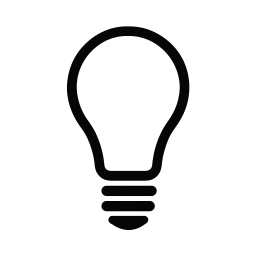Could an alien attack in 2025 be more than science fiction? A bold claim from a Harvard astrophysicist has ignited global debate, with social media buzzing about an interstellar object, 3I/ATLAS, potentially being alien technology. Posted on X by user Hunter Eagleman™ on July 25, 2025, this warning suggests a cosmic threat could strike Earth by November. With reactions pouring in—think memes, beer emojis, and heated discussions—this extraterrestrial threat is captivating audiences. Here’s what you need to know about 3I/ATLAS, the science behind it, and why it’s trending.
BREAKING: 🚨A university of Harvard professor is now saying we’re possibly going to be attacked by inner galactic aliens as early as November!
— All day Astronomy (@forallcurious) July 26, 2025
WTF!……. What do you say? pic.twitter.com/8zfccrnKyd
The Science Behind the Alien Attack 2025 Theory
At the heart of this controversy is Avi Loeb, a Harvard astronomer and leader of the Galileo Project, dedicated to finding extraterrestrial technology. In a peer-reviewed study published in July 2025, co-authored with Adam Hibberd and Adam Crowl from the Initiative for Interstellar Studies, Loeb examines 3I/ATLAS. Discovered on July 1, 2025, at 4.5 times the Earth-Sun distance, this interstellar object stands out due to its unusual brightness and trajectory, ideal for efficient planetary intercepts with minimal velocity changes.
Loeb suggests 3I/ATLAS might not be a typical asteroid or comet but could be artificial—an alien probe, perhaps. He connects it to the dark forest hypothesis, a theory explaining the Fermi Paradox (why we haven’t found alien life). This hypothesis posits that advanced civilizations remain silent and hostile to avoid detection, potentially striking first. If 3I/ATLAS is alien tech, its perihelion (closest approach to the Sun) on October 29, 2025, could enable a reverse Solar Oberth maneuver—a hidden path change that might signal hostile intent by November 21–December 5, 2025.
Why 3I/ATLAS Raises Eyebrows
- Unusual Size and Brightness: At potentially 20 kilometers, 3I/ATLAS is larger than most interstellar objects, with a brightness that defies natural explanations like cometary outgassing.
- Strategic Trajectory: Its path allows for energy-efficient maneuvers, unlike typical celestial bodies.
- Historical Context: Loeb’s prior work on ‘Oumuamua, the first known interstellar object in 2017, also hinted at artificial origins, making him a polarizing figure.
However, skepticism abounds. Many astronomers argue 3I/ATLAS could be a natural object with unusual properties, and more data is needed to confirm Loeb’s claims.

The Oberth Maneuver and Dark Forest Hypothesis Explained
The Oberth maneuver is a proven technique where spacecraft gain speed by firing engines near a massive body like the Sun. Loeb speculates 3I/ATLAS could use this to alter its course undetected during its October 2025 perihelion, when it’s hidden from Earth’s view. Combined with the dark forest hypothesis, this raises the chilling possibility of a preemptive alien strike. While speculative, these ideas fuel the alien attack 2025 narrative, blending hard science with cosmic intrigue.
Social Media Fuels the Extraterrestrial Threat Buzz
Hunter Eagleman’s X post, complete with a call for a cold beer, captures the public’s mix of humor and curiosity. Responses range from witty jabs—user Zachary Heron quipped Democrats might “welcome” aliens—to serious dives into Loeb’s paper, with XAmericanEagleX highlighting the November 2025 window. The conversation is amplified by recent drone sightings and conspiracy theories like Project Blue Beam, which claims staged alien invasions. This blend of science, skepticism, and memes has made 3I/ATLAS a viral topic.
What Could an Alien Attack in 2025 Mean?
If Loeb’s hypothesis holds, confirming 3I/ATLAS as alien technology would redefine our place in the universe. An extraterrestrial threat could demand global preparation for contact—peaceful or hostile. Conversely, if 3I/ATLAS is a natural object, it may temper speculation while advancing our understanding of interstellar visitors. Astronomers are poised to monitor it closely, with key observations expected by late 2025.








Leave a Reply